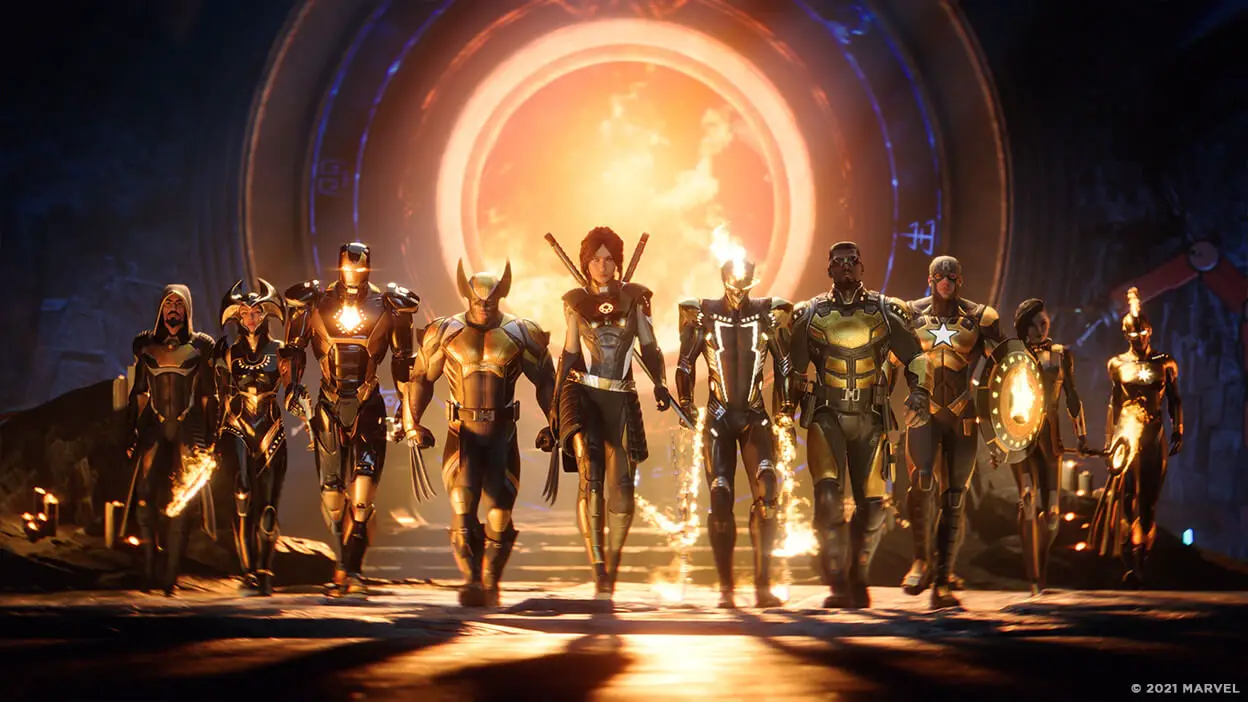Marvel’s Midnight Suns is a tactical superhero RPG that aims to combine the strengths of Firaxis’s proven turn-based formula with minor deck-building, action-heavy combat, and dialogue-driven character development. Calling myself torn inside on how to approach the overall verdict of this game in an action movie disguise is a mild understatement. Let’s jump right in, shall we?
I’m not a fan
As we’re going to speak about gameplay and story elements, I’d like to add a disclaimer first: I have never been a die-hard fan of Marvel heroes, movies or comics. I watched the occasional thing on big cinema screens but can hardly recall the stories as they didn’t seem to be that important in the grand scheme of things. The same can be said of Midnight Suns’ main plot, as it is not entirely bad but overall easily forgettable.
Lilith, the mother of demons, has put her malevolent gaze back upon Earth after being awakened by evil genius Doctor Faustus. The only thing capable of stopping her might be you, a hero from centuries ago with the inventive name “The Hunter”. Like Lilith, you did spend the last hundred years in a dreamlike state, somewhere in between the otherwise obvious boundaries of life and death. And, as the name of the game strongly suggests, you have superhuman champions at your side.
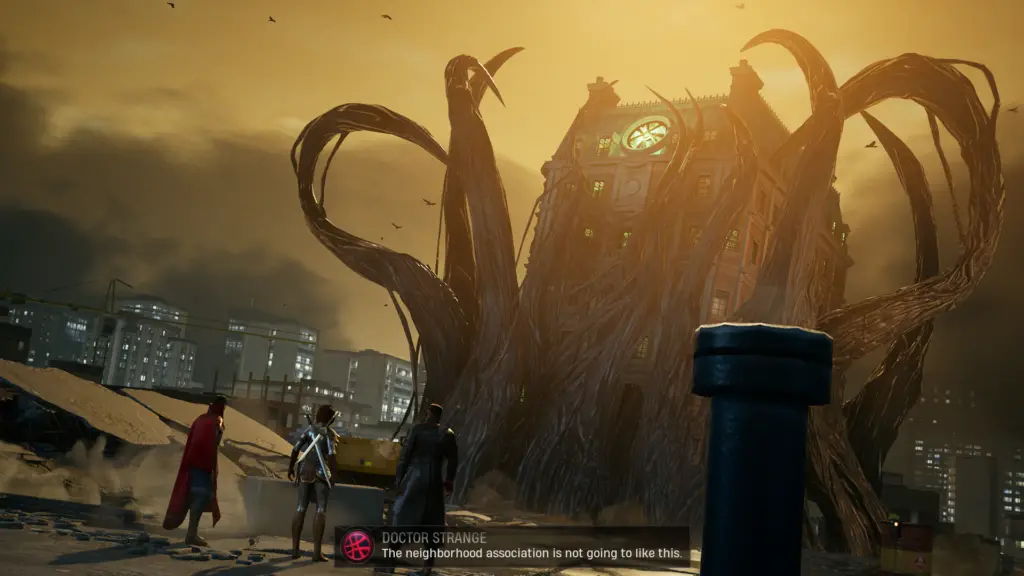
The X-Men, The Avengers, and of course, The Midnight Suns are all part of your team and fight for Mother Earth. Even I knew many, if not nearly all of them, as their faces and appearances sunk into pop culture long ago. The introduction, performed as mixture of tutorial and vessel to elaborate on world-building and setting, was extremely satisfying. In fact, I played the demo for around 30 minutes before I decided that this is Game of the Year material.
Little did I know that my mind should change rather quickly, at least when it comes to writing and character development. Let me say upfront that there are going to be many positives further down but I want to be done with the awful parts of Marvel’s Midnight Suns rather quickly. It felt like I was playing a game that was simultaneously put together by amateurs and experts alike, working on different parts of the game.
I did chuckle a lot about the jokes Iron Man and Doctor Strange threw at each other when the game started. I even said it out loud, commenting about how easily the game weaves light-hearted conversation into the tactical, action-packed combat without ever feeling dull or filled with stereotypes. This, however, was before I created my own character and made her run around the interdimensional monastery called “The Abbey”.

The character editor is fine and gives just enough options to at least find a woman or man of your liking. I just wish they had also offered different voice options, as the one I was given felt very out of place, even lacking in many regards. The Hunter was dormant for many years, and I get that she is supposed to sound a bit off but that doesn’t mean she has to have the empathetic capabilities of a rock, always sound bored, unimpressed or not caring. There is also a weaved-in loophole that tries to explain why she, after having slept in a comatose state for 300 years, still knows many things about the earth. She dreamed of it. Now she knows what cars are, but not how to operate one. I guess it does make sense in this kind of setting but I surely wouldn’t rate it as imaginative. So, “The Abbey”.
Think of it as a base or hub where you’ll always return to after each mission. You can explore it in third-person mode and find hidden stuff like energy and shards, which you’ll need later on to create specific items and cards for your combat deck. Every hero has their own room and can be, more or less, interacted with. Some, like the infamous half-vampire Blade, are also assigned to specific roles. He functions as a sort of cool and cruel combat instructor. There is also the option to spar with one of your allies, which will benefit your friendship levels and increase their stats for the next mission only.
The friendship part is what makes me dislike the story part of this game so much. On the surface, it doesn’t sound too bad. Get in good standing with some of your allies, and you’ll unlock more abilities. However, getting there almost always involves special meetings that have nothing to do with the hero you’d like to get in touch with. It is a random assortment of playing videogames together, looking at the stars or going fishing. Want to know more about Spiderman? Why not look at the stars. Haven’t talked to Iron Man yet? Better not forget your fishing lures.
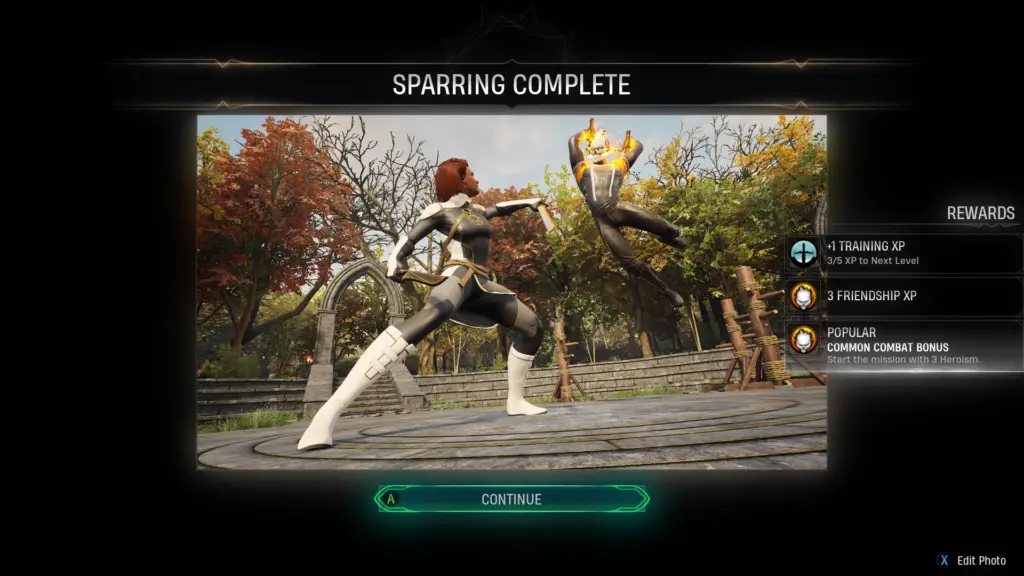
This alone might be tolerable but the dialogue is superficial at best and outright dumb at worst. Imagine how I laughed about the jokes they cracked at the start of the game? These never change. It’s beating that dead horse over and over again until there aren’t even bone shards left. It feels like Firaxis just couldn’t be bothered to give some life and soul to these inhuman beings that have already seen multiple apocalypses come and go. Some of them, like Captain Marvel, fought on other planets and bested alien races but all you ever do is crack bad jokes, gift a picture frame at the end of your evening and your friendship goes up a fixed amount.
It feels like half of the game, or at least forty percent, involve nonsensical verbal communications with your peers, just to be able to use a couple more abilities. You can’t just slap random insecurities on every party member and think that this makes them feel three-dimensional. So, if you went into the game expecting story-telling depth and party development à la Dragon Age, better brace yourself for disappointment.
This game is great!
If you’re still here, asking yourself when we finally get to the gameplay part, I can happily assure you that all I did was reenact the gameplay experience: Wait for the text to be done, so you’re finally ready for the action, because it is worth it. Combat is where Firaxis can shine, even though it vastly differs from their prior big hits.
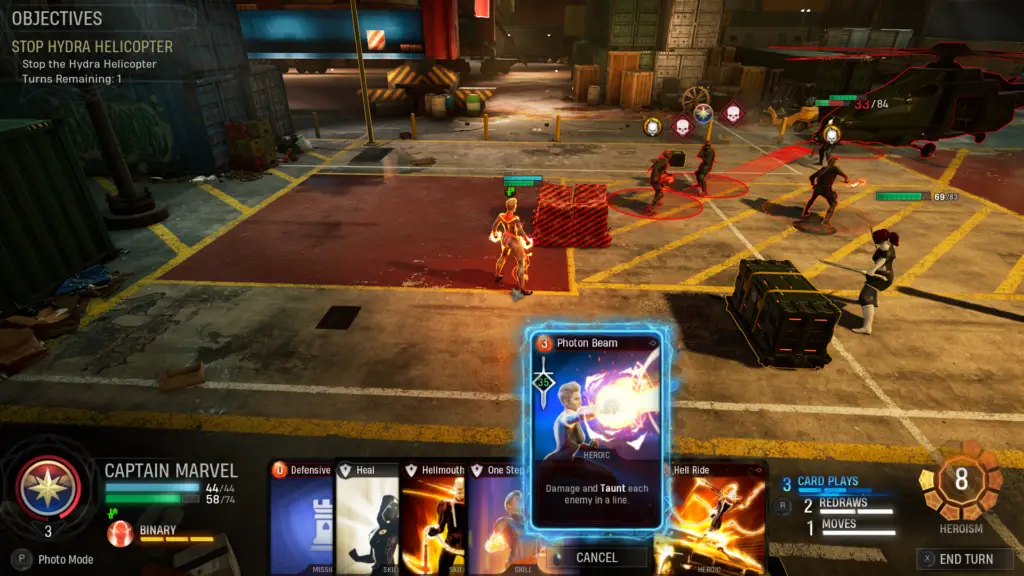
The biggest difference is the addition of cards instead of skills and actions. Every character comes pre-equipped with a deck, consisting of 8 cards. These cards can be swapped out or altered, given the correct circumstances. I’m not a big fan of deck-building mechanics as I often find them to be immersion breaking but Midnight Suns manages to make the whole card-playing mechanic feel just right.
Over the course of the game you’ll find different ways to unlock more cards. One is the aforementioned, dreadful path of friendship. Others include mission rewards and the creation of new or upgraded cards at the forge. Two cards of the same ability can be fused to a higher level, upgrading the ability and almost always positively altering the effects. If you want a certain hero go gather new abilities, take them on a mission and you will always get at least some cards that will help to improve their loadout.
Every hero has a rather unique set a cards with obvious strengths and weaknesses. Some of them, like Doctor Strange, play more supportive roles, in stark contrast to Hell-Rider. He is a really hard hitter but to do so, he has to put in lots of help and requires great efforts from the rest of the team. The balancing doesn’t feel like an afterthought but as if it actually took place when all of these characters were designed.

Mission parameters vary from killing every enemy to destroying a very specific target, rescuing hostages or delaying forces long enough, so a third party can safely retreat. The variation feels big enough to pick up different heroes for different needs as you might look for more offensive or defensive capabilities, depending on your target. There is a mission table in the Abbey that shows your goals and expected rewards, so if you think about forging special cards, you can plan ahead.
The actual combat feels flashy, fast and delivers many punches, literally and figuratively. Instead of every character having movement and action points, there is a shared pool called “Card Plays” that works in a similar way, yet offers more flexibility and tactics involved. A normal round ends when either your pool of cards plays or your hand are empty, but that doesn’t always mean you’re out of action. There is the option to redraw cards twice per round as well as using the environment for the cost of a specific resource called heroism.
The heroism meter practically fills with every card played. There is a number at the bottom that indicates how big of an impact it has with many cards giving one or two points. Very powerful abilities also cost heroism but in return, devastate whole parts of the battlefield. Another tricky feature is the option to move, as it is inherently not necessary to move your heroes around. Many attacks can basically target everyone on the battlefield, but some shoot out in arcs or cones, therefore requiring more precision. The controls are very intuitive and I highly recommend finishing the tutorial, as it greatly covers the basics of combat and tactics.
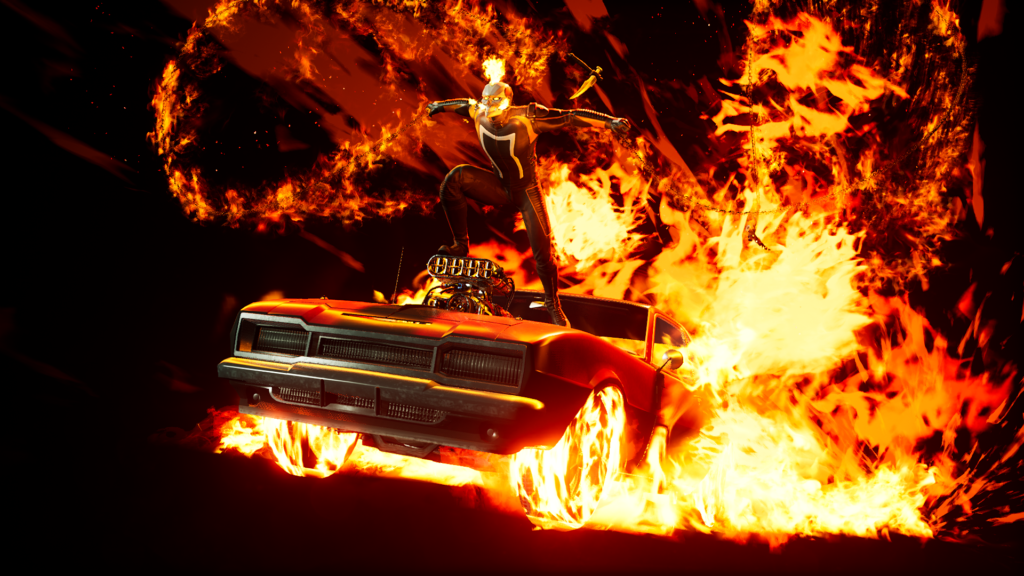
The graphics look fine – neither great nor bad – which also means that the game runs great on Steam Deck. Many special powers look outright amazing, and you can tell the work that went into animating their small cutscenes. The performance does, however tank whenever you run around the abbey, as if the place isn’t filled with enough annoyance already. Feels like somebody ticked every shader box in the Unreal engine but couldn’t be bothered to optimize afterward. The most important part, combat, does run flawlessly though.
Conclusion
It seems like Marvel’s Midnight Suns suffers from many bugs, at least if you look up early reviews on Steam. I have to admit that things might have gotten better, but the game is still very far from a stable experience. I struggled through a couple of crashes, freezes, countless graphic bugs and other unpleasant encounters. It always leaves a bad taste when there is a game, riddled with bugs, offering quite a lot of microtransactions. Many of them are cosmetics only, but I can already see how many fans were disappointed because some of the shiny trailer outfits were to be found behind more dollars ─ after paying a AAA price.
Putting a verdict under this game feels rather ambiguous since I put together a very black-and-white review. At times I felt dragged down by the uninspired dialogue system but the daily in game loop made up for it. Get up, unlock cards, get a mission, and enjoy your rewards. Just don’t think about whatever happens once the mission is done and your placeholder hero, “The Hunter” engages in more fishing and astronomical activities.
If you were expecting a game that feels like the more recent X-Coms, you probably found out by now that this is not the case. Battles feel faster and flow smoothly with minimal breaks in-between as you’re basically playing a card battler. The bottom line is that, if you enjoy the tactical combat with minor deck building and flashy explosions, you are in for a very good time, at least half of the game. If you also enjoy not-so-great dialogue but can look past that fact because you are a big fan of the franchise then there is nothing to worry about. It is possible that here, the whole is greater than the sum of its parts and you either revel in its strengths or get mad about its flaws.

